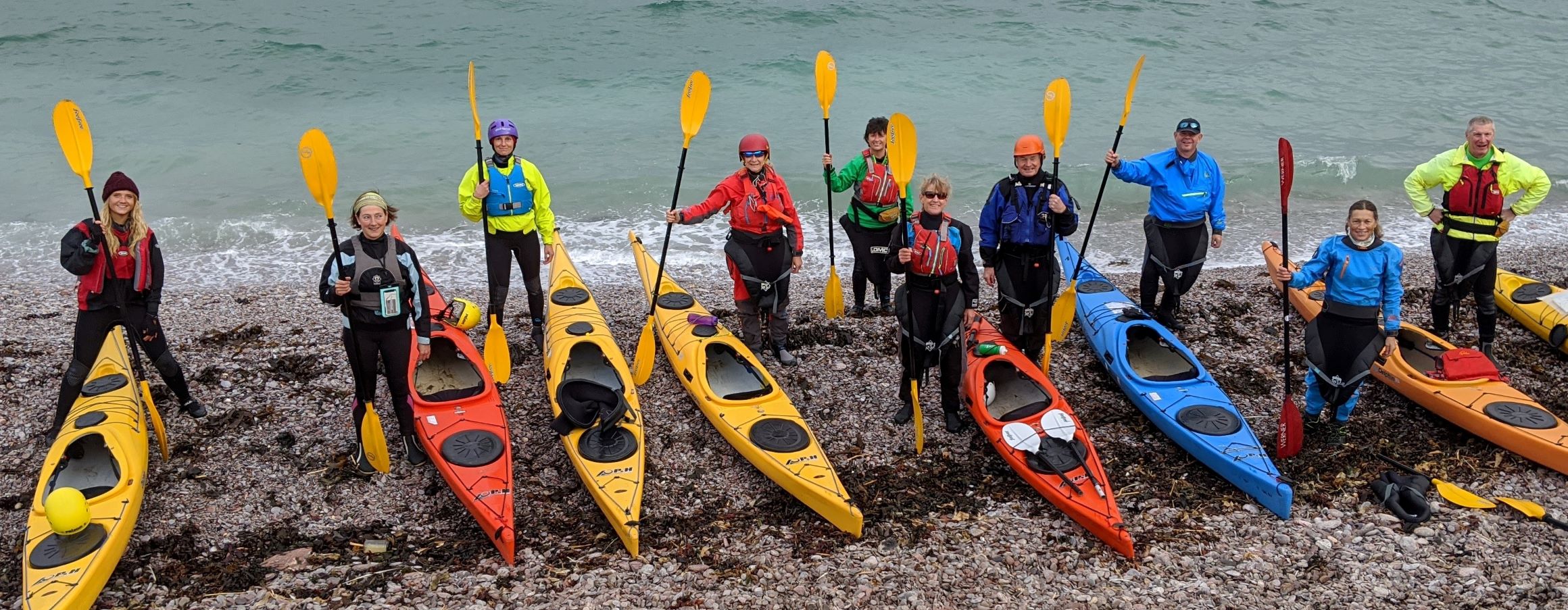New member, or existing member new to Paddlesports? Please email: Mandy at paddlesports.enquiries@dartmouthyachtclub.co.uk
For sailing dinghies, motorboats and PB2 courses, please email: Gareth at rcsailing@dartmouthyachtclub.co.uk
Our Fleet Why you should join Tides
Taster Sessions for visitors River Guide Sit on Top kayaks
General Information for Paddlesports Members
DYC organized paddles are always led by qualified Coach or Sea Kayak Leader. Members are expected to stay with the group. Do not paddle off out of communication distance. See the risk assessment further down of this page for more safety information.
Welfare officer: The club Welfare officer, Kate Brown, can be contacted at: safeguarding@dartmouthyachtclub.co.uk .
Club paddles
The DYC Paddlesports programme for 2025 is now available. Details can be found by clicking on the link "Link to Members' Page" above. The club paddling season starts in late April and runs until September. Peer paddles often continue over the winter months, weather permitting.
Using club boats on your own
You can use some boats on your own. The Sit on Top kayaks (SOTs) are easy to use. Contact the Rear Commodore Paddlesports (rcpaddlesports@dartmouthyachtclub.co.uk) if you are unsure which craft you are allowed to use and under what circumstances. You must have experience before you can use the Sea (sit in) kayaks on your own. It is recommended best practice to paddle in a group of a minimum of 2, and ideally 3, paddlers rather than paddling alone. Skills can be obtained/increased by attending the group paddles.
Taking visitors out on the water
Taking visitors out for a paddle requires advance approval from the Rear Commodore Paddlesports (rcpaddlesports@dartmouthyachtclub.co.uk). Permission will only be granted if you already have sufficient experience as a paddler, and in particular, are able to carry out a rescue. You will be accountable for the safety of your visitor(s) at all times. All visitor(s) must agree to abide by the rules, regulations and best practices of the club. Buoyancy aids must be worn. A donation to club funds of, say, £5.00 per visitor would be much appreciated.

